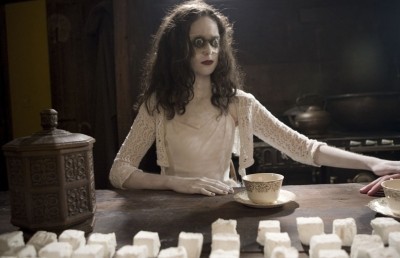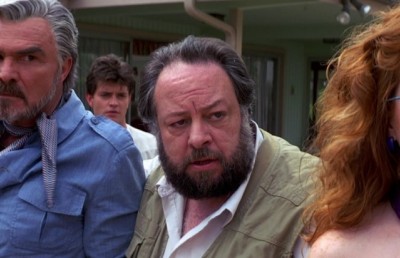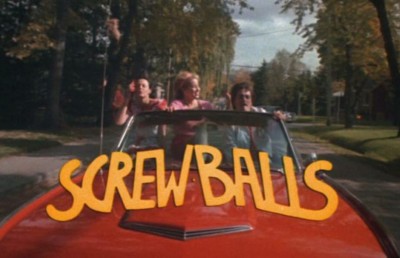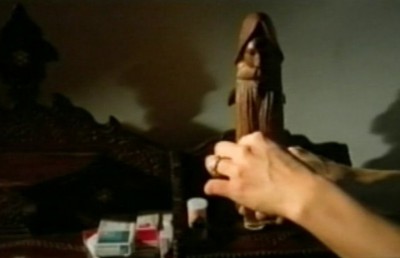Perversion Story
Fulci Landmark
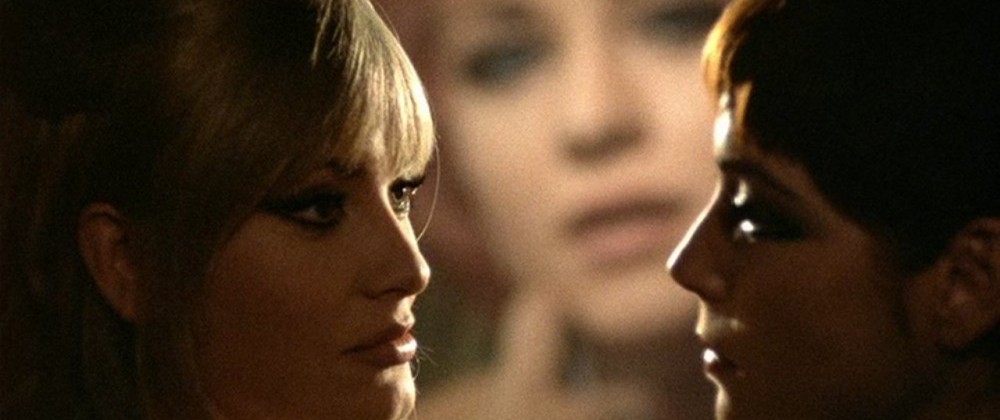
PS: This analysis of the film/DVD contains spoilers.
Severin Films’ DVD release of Perversion Story (Italian title is Una sull’altra which translates to One on Top of the Other, its first English title) marks an important contribution for the Fulci fan/scholar, as it represents a transitional moment in the career of Fulci. Fans who only know Fulci for his later zombie, gialli and horror films will be surprised to know that he excelled in comedies, but also made costume films, westerns, crime films, and dramas. Perversion Story is the first film to look forward to his gialli and horror rather than back and, along with his western from 1966 Massacre Time, his first that can be properly labelled a ‘Euro-cult’ item. Perversion Story marks Fulci’s first foray into the broad parameters of giallo, although the giallo was not yet clearly established as a formula, hence Perversion Story feels more police procedural and plot-driven than later gialli. Perversion Story was released one year before the film that really set the giallo conventions in stone and whose success sparked the flowering of giallo productions, Dario Argento’s Bird with the Crystal Plumage (Mario Bava’s Blood and Black Lace from 1966 is another instrumental pre-1969 giallo, but from an aesthetic rather than production standpoint). The result is that Perversion Story lacks some of key conventions of the giallo –there is only one murder, there are no black gloved killers, there is no overt violence to speak of– while still managing to touch on elements that would infuse later gialli: a great jazzy/lounge score from Riz Ortolani; a layperson that becomes involved in the investigation, along with the police, who are more invested, and sexy women. There is even an appearance of that old giallo standby, J & B whiskey, the true test of whether a film is a giallo or not! And though it is a notch below his best gialli, Don’t Torture a Duckling (1971), and A Lizard in a Women’s Skin (1971), and on par with his other giallo, Seven Notes In Black (aka The Psychic – 1977), it still contains enough inventive visual touches and perverse moments to keep any eurohorror fan happy.
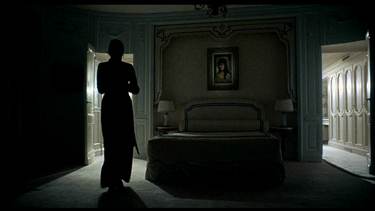
The opening scene introduces French actor Jean Sorel (who also starred in Fulci’s A Lizard in a Woman’s Skin) as George Dumurrier, a handsome, playboy doctor who runs a medical clinic with his brother Henry (Alberto de Mendoza). In the second scene the film’s thriller pedigree is quickly established with some menacing lighting and bold framing which belies the domestic setting between George Dumurrier and his wife Susan. The scene takes place in their home, but the stark lighting and bold framing dramaticizes the exchange between husband and wife (played by Marisa Mell, in one of her two roles) and sets up a mood of suspicion and paranoia. German actress Marisa Mell, who played Diabolik’s lover/partner in Mario Bava’s Diabolik (1968), plays a dual role, George’s wife Susan Dumurrier, and her look-a-like, Monica Weston. Mell joins only a handful of actresses to have played a similar double role: most importantly Kim Novak in Vertigo (which serves as a close template for Fulci), Irene Jacobs in The Double Life of Veronique, and Patricia Arquette in Lost Highway. However, a combination of the cosmetic changes brought forth onto Marisa Mell (wearing a brown wig, brown eye lenses, dark circles under her eyes) plus her change in acting comportment makes it easy to overlook that Monica and Susan are played by the same actress. Which is why when George sees Monica for the first time at a strip bar, after his wife’s ‘death,’ Fulci intercuts a shot of George remembering his wife, so the connection is made explicit for the audience.
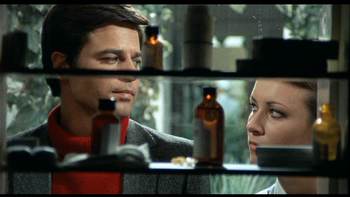
In the opening scene George instructs his wife’s new nurse Elizabeth O’Neal (a secondary character who will play an important role in the film’s twist) about his wife’s medical condition (asthma, nerves) and how an improper administration of her medication can cause her to go into a fatal trauma. The script underscores the implied menace and suspicion of the moment by the unusual camera placement looking out from the inside of the vanity chest at George and the nurse. This odd camera angle sets up a motif of flamboyant camera angles where the camera assumes wild and physically illogical points of views. George leaves his wife in the trust of her sister Martha (played by American 1950s science-fiction starlet, Faith Domergue) and meets with his lover, Jane (Elsa Martinelli, The Trial, The 10th Victim). The use of remarkable camera angles continues in a sex scene between George and Jane, where the camera shifts from close-ups of their nude bodies to a shot looking up through the pink, satin bed sheets, leading to what must have been for some ‘terza visione’ [1] theatre goers, a frustratingly abstract image of the sex act. After sex with his lover, George receives news that his wife has died. Scenes of Susan’s corpse displayed in their home and then in the morgue are again visually arresting. And when Fulci cuts back to this scene during a later sex scene between George and Monica, it produces more than a hint of necrophilia. With Susan’s death, the future seems clear for them, especially with the surprising (to George) news that he is to gain from a one million dollar insurance policy.
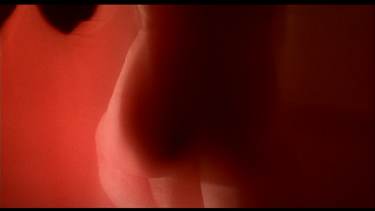
However, things get surreally complicated when George and Jane take in a striptease show, and come across a stunning blonde haired performer named Monica Weston who is a dead ringer for his wife Susan. George quickly becomes obsessed with this Susan look-a-like, wanting to know everything about her. The temptation is too great, so George sleeps with Monica and things get weirder when he sees that she takes the same medication as Susan did and, like his wife, suffers from asthma. Is the striking resemblance merely a coincidence? Or does Monica Weston know about Susan? Or is Susan still alive and hiding out in disguise? If so, to what end? By now you are thinking, I’ve seen this plot before….Vertigo. There is little doubt that Fulci (along with about a dozen other filmmakers) has been inspired by the great Hitchcock thriller, right down to a man who ends up playing the equivalent of the Galvin Elster character (the man behind the plot to stage Susan’s death), and the San Francisco shooting location. George claims his innocence, but circumstances are stacked against him, and he is eventually imprisoned and placed on death row.
Like most gialli, Perversion Story keeps the viewer guessing as to the killer’s identity and concludes with a clever twist. The revelation occurs in the scene where Henry visits his brother George in prison on death row. Henry feels so confident about his perfect crime that he reveals to his brother how he was set up for the fall in his get rich scheme. Like in Vertigo, the death of George’s wife was staged by Henry and Susan so that they would ultimately end up with the insurance money. As part of their scheme, they murdered the nurse seen in the early scene and used her body to fill in for Susan’s. When George returns to his home upon hearing of his wife’s death, the ‘dead’ Susan lying on her bed was merely faking death. By the time the corpse got to the morgue to be identified by George, Susan’s corpse was replaced by the nurse’s, whose face was now decomposed to the point of being unrecognizable (how the body became decomposed so quickly is unclear). Henry also switched Susan’s dental mold for Elizabeth O’Neal’s (the nurse) so the police would be fooled into believing that the disfigured corpse was Susan’s. Susan’s death by overmedication is blamed on George, and Henry, as his brother, would stand to inherit the insurance after George’s execution.
A great part of the film’s stylistic dynamism occurs in the first 40 or so minutes of the film, after which the film falls into a more conventional, though still engrossing, murder mystery. Strong from beginning to end is Riz Ortolani’s jazzy lounge score which frequently veers toward the avant-garde or ambient to underscore George’s disorientation when things gets particularly confusing. Fulci keeps things moving at a good clip and steers clear of the sort of violence or excessiveness of his later horror films, but there are enough odd visual touches, degenerate characters, and stylish musical cues on hand to brand this far above the average thriller. Some of this visual flair includes split screens that owe much to Andy Warhol’s Pop art and diegetic rear projected images that recall their use in Boorman’s modernist neo-noir Point Blank.
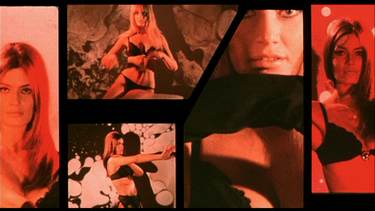
Fulci flirts with the sexual titillation factor common to the giallo, but uses it to tease rather than fulfill. The best example comes in the scene where Jane feigns sexual interest in Monica during a photo shoot to get her to admit her knowledge of nurse Elizabeth O’Neal. Fulci skews the matter by giving Elsa Martinelli the kind of features you would normally code as ‘lesbian’: very short hair, a stern comportment, and brandishing a phallic telephoto 35mm camera lens. Monica seems game, while Jane’s actions remain ambiguous. The sexual aspect of the scene is cemented when Fulci cuts to an identical ‘impossible’ camera angle as the earlier sex scene between Jane and George (the ‘pink bed sheet’ point of view), with the camera looking up ‘through’ the studio floor as Jane mounts Monica. The angle is made even more irrational when the next shot shows that Monica is lying on a solid beige carpet (what could the camera have been possible looking through in the previous shot???). Jane mounts Monica with the intent of photographing her but caresses and grinds her leather pants into Monica’s groin. The sexually aroused Monica begins to breathe heavy. Jane turns off the studio lights and mounts Monica again, only to suddenly break the mood by turning them back on and switching on a light box with a large photograph of Susan’s nurse, (actually a dancer) Elizabeth O’Neal, who Jane implies was a former roommate of Monica’s.
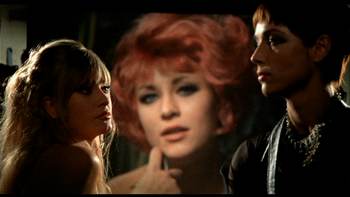
The preparation for George’s execution scene is handled with a perfect blend of realism (attention to every little detail) and expressive style (Ortolani’s melancholic trumpet layered over the voice-over of the priest’s Latin last rites). Before the execution is narratively complete, the scene cuts to a Paris café, where we see Marisa Mell back in her brown hair/brown eyed Susan appearance. Fulci plays the oldest trick in the book, crosscutting between the preparation for George’s execution and the killer enjoying the fruits of his well executed plan. As planned, Henry meets Susan in a Paris café, but their plan is foiled by an unknown entity appearing unexpectedly: Susan’s former jilted lover, a middle-aged man named Benjamin Wormser (Riccardo Cucciolla), who viewers will recall from his single scene. Before Henry and Susan can even kiss, Benjamin’s sad voice calls out Monica’s name and then he shoots Henry and Susan in cold blood. Benjamin’s abrupt reappearance and his violent act in this penultimate scene was foreshadowed in his introduction scene at the one hour mark. In his introduction scene Benjamin appears, again unexpectedly, in Monica’s apartment, and begs her to remain in San Francisco so that they may continue to see each other, even if only from time to time. Benjamin, physically dwarfed by Marisa Mell, pleads with her, telling her that she means everything to him, and that if she stops seeing him, his life would be empty and not worth living. Monica seems barely bothered by his veiled threat. She replies, “And so you will kill me?” Despondingly, he replies, with little energy and barely loud enough to hear, “Yes….I will kill you.” Monica will grow to regret her confident off-handed dare, but this little bit of innocuous dialogue shows just how well-scripted the film is.
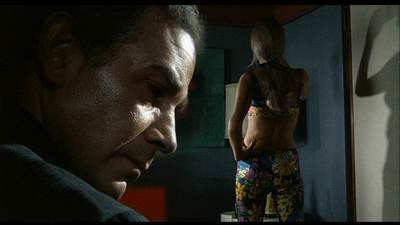
After the murder of George and Monica/Susan the film cuts back to the final scene at the San Quentin prison, which is handled in a pseudo realist style, with Fulci taking full advantage of the gas chamber location (apparently he was the first filmmaker allowed to shoot inside the prison gas chamber). The scene outlines a reporter giving a moment by moment news reportage account of how George’s death row sentence was stayed by a timely telex from Paris, informing the San Francisco authorities that Susan Dumurrier, aka Monica Weston–identified by her murderer Benjamin Wormser– was indeed still alive.
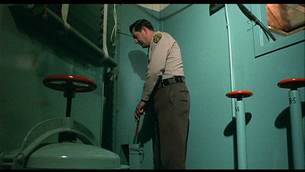
Severin’s DVD release of this important eurocult item provides an excellent 16 × 9, 1.85 anamorphic transfer with an Italian or English audio option, with English subtitles (the Italian track being the better option). Thankfully, the people at Severin understand the differences between digital and film, namely that grain is an inherent part of celluloid and not something to fear and ‘correct’ in the digital transfer process (that dreaded, DNR, digital noise reduction). [2] The colors and image stability are remarkable for a film from 1969 and as you can tell from the frame stills, the image is clean but with the texture and depth that comes from film grain properly rendered digitally. The special features treat is a rare stand alone CD of the great Riz Ortolani soundtrack, which runs at just under 31 minutes but is inimitably playable in loop mode.
Endnotes
1 Terza visione is a production practise in the Italian cinema industry of the 1960s, 1970s, which refers to the ‘third run,’ in contrast to films that played in the ‘prima visione’ (first run) or seconda visione (second run). Terza visione meant that films would play for a longer time but at theatres in more remote areas (not city centers), with lower ticket prices. Audiences at these films were more likely to be from the South, working class, and less educated. Popular genre and exploitation films played at terza visione rather than prima visione runs.
2 Producer/Historian and Preservation expert Robert A. Harris has been at the helm of some great DVD restorations in the past years (Vertigo, Lawrence of Arabia, Spartacus, Napoleon). I urge you to read his illuminating plea against the lowest common denominator consumer desire to have everything look like a HD National Geographic special, “DNR….and other things that go bump in the night.” This fight to educate the masses against this growing trend of ‘cleaning’ up a film may be the ‘letterbox’ of the Blu-Ray generation.



